ACC Expert Consensus on Same-Day Discharge post-PCI
“Expecting expensive institutions to become more cost efficient is not a viable avenue for making health care affordable and available.“
“Affordability and accessibility come instead from disruptive innovations that enable less expensive venues of care to become capable of doing progressively more sophisticated things, with equal or better quality than their high-cost counterparts. ”
– Clayton M. Christensen, The Innovator’s Prescription: A Disruptive Solution for Health Care
To change the costs and availability of healthcare, we have to inquire if all of the assumptions and components of “standard of care” are there due to clinical necessity or simply because they have always been there. The 2021 ACC Expert Consensus Decision Pathway on Same-Day Discharge (SDD) after PCI1 compels us to take a hard look at the way we approach percutaneous coronary interventions (PCI) and potentially to expand elective PCI to more diverse sites of service.
Led by Dr. Sunil Rao, the working group addresses the many reasons that we should be carefully considering SDD for many patients undergoing elective PCI (excluding those presenting with ST segment elevation myocardial infarction (STEMI) or non-ST segment elevation myocardial infarction (NSTEMI)).
- Patients want to go home: Measured in terms of both preference and post-care satisfaction, the overwhelming majority of patients want SDD post-PCI.
- It’s safer to get out: No difference in major adverse cardiovascular events (MACE) rates has been observed after SDD, and leaving the hospital means of course reducing the 8% of hospitalizations associated with problems born of being in the hospital in the first place.
- So many savings: SDD after PCI can save up to $5,000 per procedure (plus another $2,000 more in savings when using radial access) for aggregate savings estimated to be as much as $500 million annually in the US.
To help launch this paradigm of SDD into practice, the authors provide approachable and adaptable checklists to ensure each individual case is carefully assessed in terms of the appropriateness of SDD.
Stepping back, this ACC document reminds us of the procedural maturity of modern PCI, both in terms of consistent safety as well as the need to continue to advance further than we are now. This contextual shift toward SDD will now enable innovative providers to push toward office- or ASC-based outpatient PCI, bringing the same convenience, safety, and accessibility to this important piece of modern heartcare that patients enjoy with other outpatient procedures. For example, the safety of orthopedics means there’s no reason to be in the hospital for an ACL repair or elective hip replacement, and now PCI can move into that same space.
As PCI becomes more outpatient focused, interventional teams must ensure that they know precisely what they will encounter in each PCI before the patient is on the table. How long is this procedure likely to take? What tools will we need? Is there a chronic total occlusion (CTO)? Is LM disease present? Are there bifurcation lesions? Which vessels are diseased and which have physiologic evidence indicating they should be treated? What C-arm angulations allow for optimal visualization of each lesion? Where is there bulky plaque, and where is there coronary calcium?
In today’s world, the diverse answers to these questions highlight the case-to-case variation clinicians experience in the cath lab. But a shift toward highly repeatable, highly predictable PCI highlights how crucial it is to have line of sight to these variations pre-procedurally, which is best provided by evaluating patients with a coronary CTA+HeartFlow FFRCT pathway. CTA+HeartFlow is uniquely able to answer these vital questions and allow clinicians to anticipate the complexities of each PCI and plan for them in an effective way to help improve the probability of success. The CTA+HeartFlow pathway gives insights that enable cath lab teams to move beyond diagnostics, advancing to intervention fully informed.
The ACC indicates that “the success of the solution sets rests firmly on [the proposed solution’s] ability to have a measurable impact on the delivery of care.” While it may be some time before outpatient PCI seems as routine as an ACL repair, that path has begun. Assessing each patient with CTA+HeartFlow will be essential to covering the ground ahead as we shift toward SDD and sites of service which will increase the accessibility and patient-friendliness of PCI.
— A perspective from HeartFlow Chief Medical Officer, Campbell Rogers, MD
Bio | LinkedIn
1. See Rao, et al. J Am Coll Cardiol 2021. doi.org/10.1016/j.jacc.2020.11.013 2. Driessen, et al. J Am Coll Cardiol 2019. Nørgaard, et al. Euro Radiology 2015.





